At Least 224 Killed So Far During Iran’s Crackdown On Protests
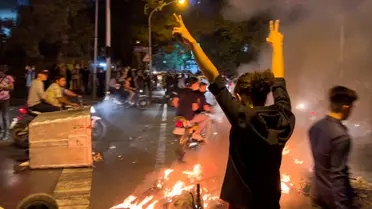
A human rights group says security forces have killed at least 224 people in Iran’s antigovernment protests ignited by death of a 22-year-old woman in custody of hijab police last month.

A human rights group says security forces have killed at least 224 people in Iran’s antigovernment protests ignited by death of a 22-year-old woman in custody of hijab police last month.
The US-based Human Rights Activists News Agency (HRANA) said Friday that at least 29 minors were among the casualties.
The group added that at least 24 government agents, including from the Revolutionary Guards, paramilitary Basij forces and police, have also been killed during the unrest.
According to HRANA, about 6,000 people are estimated to have been detained, among whom over 670 people have been identified. About 170 of the detainees are students, it added.
Also, HRANA reported that over 420 city and university protest gatherings have been held in 112 cities and 70 universities during the last four weeks, while the protest rallies show no sign of abating in the boldest challenge to Iran's clerical regime since the Islamic revolution of 1979.
Young activists in Iran have formed a protest organizing group that seems to represent a new opposition force, successfully issuing calls for demonstrations nationwide.
The group calling itself Tehran Youth (Javanan-e Tehran) mobilized thousands of protesters in several towns and cities on Saturday and Wednesday through social media at a time of serious internet disruptions.
In their latest statement, Tehran Youth have called on people in Tehran and other cities to gather after midday Saturday “in all places where mercenaries and repression forces are not present” to chant “Down with the Dictator”.
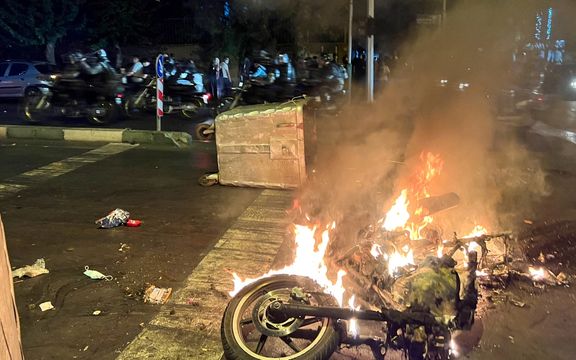
Young activists in Iran have formed a protest organizing group that seems to represent a new opposition force successfully issuing calls for demonstrations nationwide.
The group calling itself Tehran Youth (Javanan-e Tehran) mobilized thousands of protesters in several towns and cities on Saturday and Wednesday through social media at a time of serious internet disruptions.
In their latest statement, Tehran Youth have called on people in Tehran and other cities to gather after midday Saturday “in all places where mercenaries and repression forces are not present” to chant “Down with the Dictator”.
Sources in Tehran say security forces are now continually present in all busy streets and squares to prevent people from convening to protest and do not let any pedestrian stop even for a short time. Footage of recent protests generally shows smaller, mobile groups that join together, chant, and separate again in a flash-mob style whenever they find a chance.
The mobility of protesters and their distribution in various neighborhoods, however, has now turned into a big problem for the security forces who are seen in some videos aimlessly running around to confront protesters and exhausting themselves even more after long hours of deployment.
Tehran Youth have stressed “neighborhood-centered presence” of protesters in their statement to minimize harm and casualty among protesters. “The best [Internet] anti-blockage tool now is [presence] on the streets,” they said referring to the internet curfew that sometimes turns into total blackout.
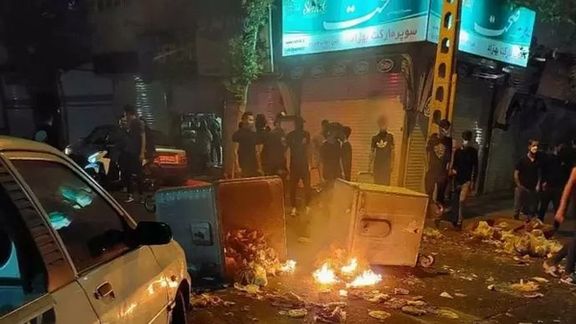
Observers in Tehran say the movement to overthrow the Islamic Republic, as protesters’ slogans indicate, has yet not grown to its full potential and that currently it is the younger generation that is carrying both the burden of the protests and the brunt of the violence.
Security forces have violently cracked down on students in various universities and arrested hundreds. They have targeted the students both inside the universities and outside. Footage posted on social media Wednesday showed a female student outside Tehran University whose eye was seriously injured with a steel pellet directly aimed at her.
“They have managed to scare the students into silence in some universities in the past few days, but the anger is there like burning coals under ashes. It can resurface any minute,” a student from Tehran’s Amir-Kabir University told Iran International.
Authorities claim that the protesters are only a minority in the Iranian society and that most Iranians are supportive of the establishment. “It is true that the numbers on the streets is not really huge but dissent is overwhelming in magnitude. The momentum is growing by the day like an avalanche,” a source in Tehran who asked not to be named said.
The Supreme National Security Council (SNSC) has dictated such strict censorship guidelines to the media that one would think nothing at all has been happening in the country if they looked at frontpages of newspapers.
Authorities are hoping that by internet and media censorship they can limit people’s sources of information to state and and IRGC-linked media which accuse protesters of rioting and destruction of public property without any mention of the violence against them.
“The media crisis in the Islamic Republic has turned into a national security crisis the continuation of which will be costly to the system and the country,” Elias Hazrati, managing director of the reformist Etemad newspaper warned the SNSC Secretary, Ali Shamkhani, in an open letter Wednesday. “Let domestic media report freely,” he wrote.

Antigovernment protests continued across Iran on Thursday with clashes reported mainly in provinces with Kurdish majority populations and western parts of the country.
Thursday marked the 28th consecutive night of protests in Iran with videos on social media showing people blocking roads to stop the movement of riot police in the city of Mahabad, in West Azarbaijan province, and gunshots and teargas reported in Ahvaz in the southwestern Khuzestan province, while several neighborhoods in capital Tehran are scenes of violent skirmishes between people and government forces.
The protest rallies in Tehran were not limited to a specific area as people from the northern or southern neighborhoods were participating in the demonstrations with slogans against the regime and the Supreme Leader while many people were chanting slogans from rooftops.
The Youth of Tehran Neighborhoods, an anonymous group that helped organize rallies in the capital in the past four weeks, called for another nationwide protests on Saturday, October 15.
Sporadic clashes were also reported from Karaj, a city near Tehran known for its youths’ resistance against the security forces.
Security forces were present in huge numbers in the streets of Kermanshah and Sanandaj, which were witnessing violent clashes in the past few days, with reports of several casualties from both sides.
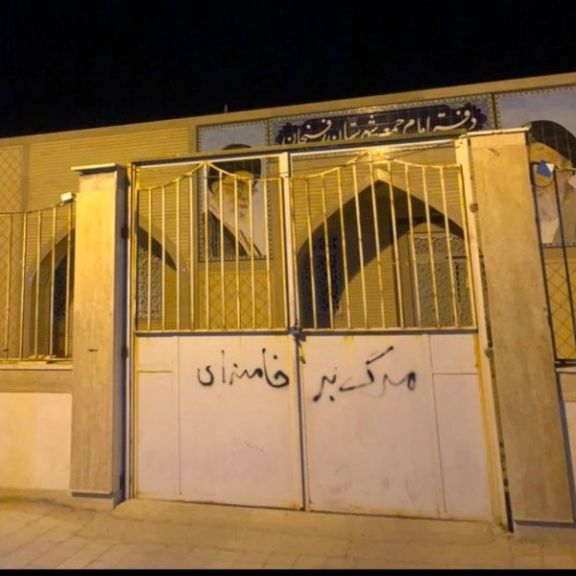
According to videos, protests have also been held in the cities of Arak, Ilam and Bukan in West Azarbaijan province. Baneh and Saqqez – the hometown of Mahsa Amini -- in Kordestan province were also hotbeds of protests on Thursday night with people having built up big fires on main streets, although little footage is available from due to internet disruption by the government.
While Internet access was shut off or significantly slowed down in many cities, SpaceX CEO Elon Musk – who had earlier promised to activate satellite internet system Starlink for Iranians – said “there are some active terminals” in Iran.
As the uprising -- sparked by the death in custody of 22-year-old Mahsa Amini, is entering its second month -- the movement, which many now refer to as a revolution, has not yet found a leader the majority would recognize. Since the early days of the Islamic Republic, the clerical leadership has consistently eliminated political parties, free media, and anyone who could possibly be in a position to lead the opposition. This has manifested itself in the biggest characteristic of the current movement which is spontaneous and has no leader.
Some pundits warn that without a leadership the movement which has chosen “Women, Life, Liberty” as its motto may fail to achieve its goal of overthrowing the Islamic Republic, and to sustain its achievement if it succeeds. Others say lacking a known leader makes it much harder for the establishment to suppress the movement.
In addition to protests in Iran, there are large rallies outside the Islamic Republic’s missions around the world, with people in some cities trying to enter the consulates and embassies to remove the flag of the Islamic regime and in some cases, police were forced to intervene.
Despite reports that Tehran is sending out letters to EU diplomats, claiming that "bilateral relations may not survive" as the EU moves to penalize Iran for killing protesters, the uprising is garnering more and more support among Western government officials and politicians.
“If Europe misses taking the nuances of the current situation into consideration, the ramification will be grave and the bilateral relations may not survive it,” warned one letter — sent to a group of EU ambassadors and seen by POLITICO. EU foreign policy chief Josep Borrell on Wednesday received a similar letter from Iranian Foreign Minister Hossein Amir-Abdollahian.
According to the Center for Human Rights in Iran, the arrests and interrogations of school children accused of joining nationwide protests in Iran and their detention in so-called “psychological centers” has raised fears of more child killings while at least 28 children were reported to be killed by the Islamic Republic’s repression machine since the protests began in mid-September.
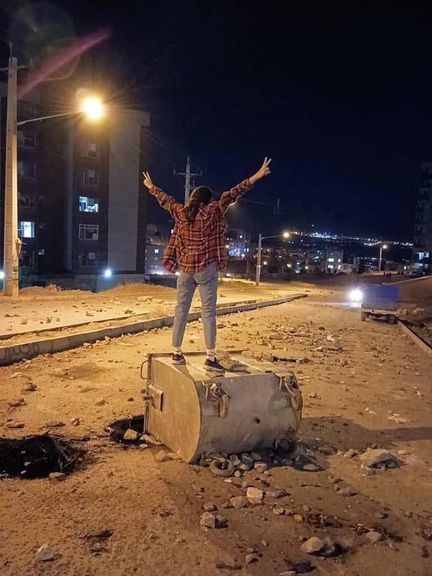
As antigovernment protests continue across Iran, right groups said Thursday at least seven people were killed during protests in Kurdish regions overnight.
Kurdish rights group Hengaw said protesters in at least 10 cities had confronted "security forces' intense violence" on Wednesday night. It added that in the city of Kermanshah, direct fire from security forces killed two people. Three members of the security forces were also killed in Kermanshah and around 40 more injured, the group said, adding a fourth member of the security forces was killed in Mahabad.
According to Norway-based Iran Human Rights organization, at least 201, including 23 children, have been killed so far during the government’s crackdown on the protests in at least 18 Iranian provinces.
The figure does not account for those possibly killed in Sanandaj and other cities with Kurdish population where the clashes have been particularly intense in the past three days.
Nearly four weeks have passed since the death in custody of 22-year-old Mahsa Amini that sparked the boldest challenge to Iran's clerical regime, but it seems the protests are getting stronger and garnering support from inside Iran and abroad, with workers from different industries staging strikes.
A source in Sanandaj, the provincial capital of Kordestan province, said riot police were searching houses and arresting dozens of young people. "We have information from Baneh and Saqqez as well. They have arrested dozens of young people since yesterday, including teenagers," added the source, who spoke to Reuters on condition of anonymity.
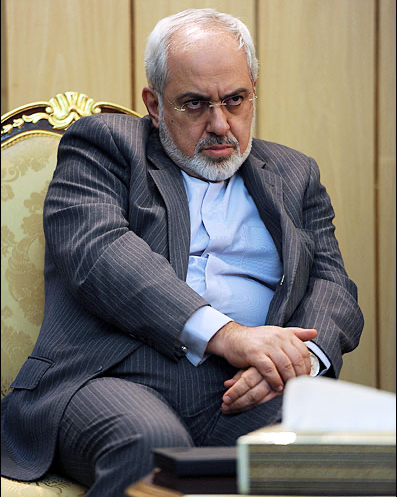
Canada imposed a new set of sanctions against 17 Iranian individuals and three entities that have participated in or enabled gross human rights violations.
The foreign ministry said in a statement on Thursday that additional sanctions were imposed under the Special Economic Measures Regulations in response to the government's human rights abuses and destabilizing actions.
Former Iranian Foreign Minister Javad Zarif was in the new list as well as former prosecutor Saeed Mortazavi, Khamenei's representative in Kayhan Hossein Shariatmadari, former president Hassan Rouhani's defense minister Amir Hatami, the current state broadcaster chief Peyman Jebelli and former parliament speaker Ali Larijani.
Canadian Foreign Minister Melanie Joly said, “The actions of the Iranian regime speak for themselves – the world has watched for years as it has pursued its agenda of violence, fear and propaganda," adding that "Canada will continue to defend human rights and we will continue to stand in solidarity with the Iranian people, including women and youth, who are courageously demanding a future where their human rights will be fully respected."
On October 3, Canada slapped sanctions on 34 Iranian officials and entities, including the Islamic Revolutionary Guard Corps (IRGC) and morality police, over the crackdown on current protests, sparked by the death of Mahsa Amini, a 22-year-old Iranian Kurdish woman who died while in custody of Iran's "morality” police.

Antigovernment protests in Iran are in their fourth week but the movement which many now refer to as a revolution has not yet found a leader the majority can trust.
Since the early days of the Islamic Republic, the clerical leadership has consistently eliminated political parties, free media, and anyone who could possibly be in a position to lead the opposition. This has manifested itself in the biggest characteristic of the current movement which is spontaneous and has no leader.
Some pundits warn that without a leadership the movement which has chosen “Women, Life, Liberty” as its motto may fail to achieve its goal of overthrowing the Islamic Republic, and to sustain its achievement if it succeeds. Others say lacking a known leader makes it much harder for the establishment to suppress the movement.
Unlike the politically driven protests in 2009, and economic protests between 2016 and 2019, the driving force of the current movement is the people’s determination to restore their social rights by getting rid of clerical rule.
“The center of gravity of the society’s immediate demands has changed from politics to citizen’s rights,” prominent reformist theoretician Saeed Hajjarian said in an analysis published Thursday while stressing that the movement should not ignore the political playground to be able to ensure long-term irrevocability of its gains.
What appears to be uniting the protesters is dislike and even hatred of the clerical regime.
A large and fierce protest in Tehran's Nazi Abad district Wednesday night.
Protests – on the streets, in universities, and schools -- are now taking place in nearly a hundred large and small cities and towns. Despite the growth of the movement, Islamic Republic’s ruler Ali Khamenei and his officials continue to deny the authenticity of the current movement and insist that foreign “enemies” including the United States, Britain, Israel, and Saudi Arabia, are fomenting the unrest.
Authorities also insist that protesters are only a small minority. The government mouthpiece, Iran newspaper, claimed Thursday that only 80,000 have taken part in the protests across the country.
The footage that finds its way to social media despite serious Internet disruption appears to confirm their claim as these usually show smaller groups of people protesting. However, this is because protesters’ flash-mob-style tactic that confuses security forces and reduces their vulnerability to attacks by government forces.
There have been exceptions too, when thousands have gathered in one area such as the protests Saturday and Wednesday in the working-class Nazi Abad neighborhood in Tehran, where overwhelmed by the sheer numbers, security forces largely remained on the side-lines.
In the past few years ultra-hardliners, whose sway on all forces and institutions of the state was completed with the ascension of Ebrahim Raisi to presidency, have intensified social restrictions.
More interference in people’s lifestyles and popular resentment of the political and religious establishment is so bluntly felt now that even some former and current officials find themselves incapable of defending it.
“The ruling system has clearly broken into two. You can see this in officials’ remarks and attitude,” a political analyst who asked not to be named said referring to remarks by two prominent establishment figures in the past couple of days.
“What should people do if they don’t want to be led to enjoining good?” the minister of cultural heritage and tourism, Ezzatollah Zarghami, said in a tweet Tuesday referring to the Islamic concept of promoting moral goodness and forbidding evil according to Sharia. For ultra-hardliners enforcing hijab is following that edict. Former speaker Ali Larijani in remarks Wednesday in also criticized hijab policing.
Zarghami and Larijani both hail from the Revolutionary Guard (IRGC) and both have served at the helm of the Islamic Republic’s biggest propaganda machine, the state broadcaster (IRIB) for many years.